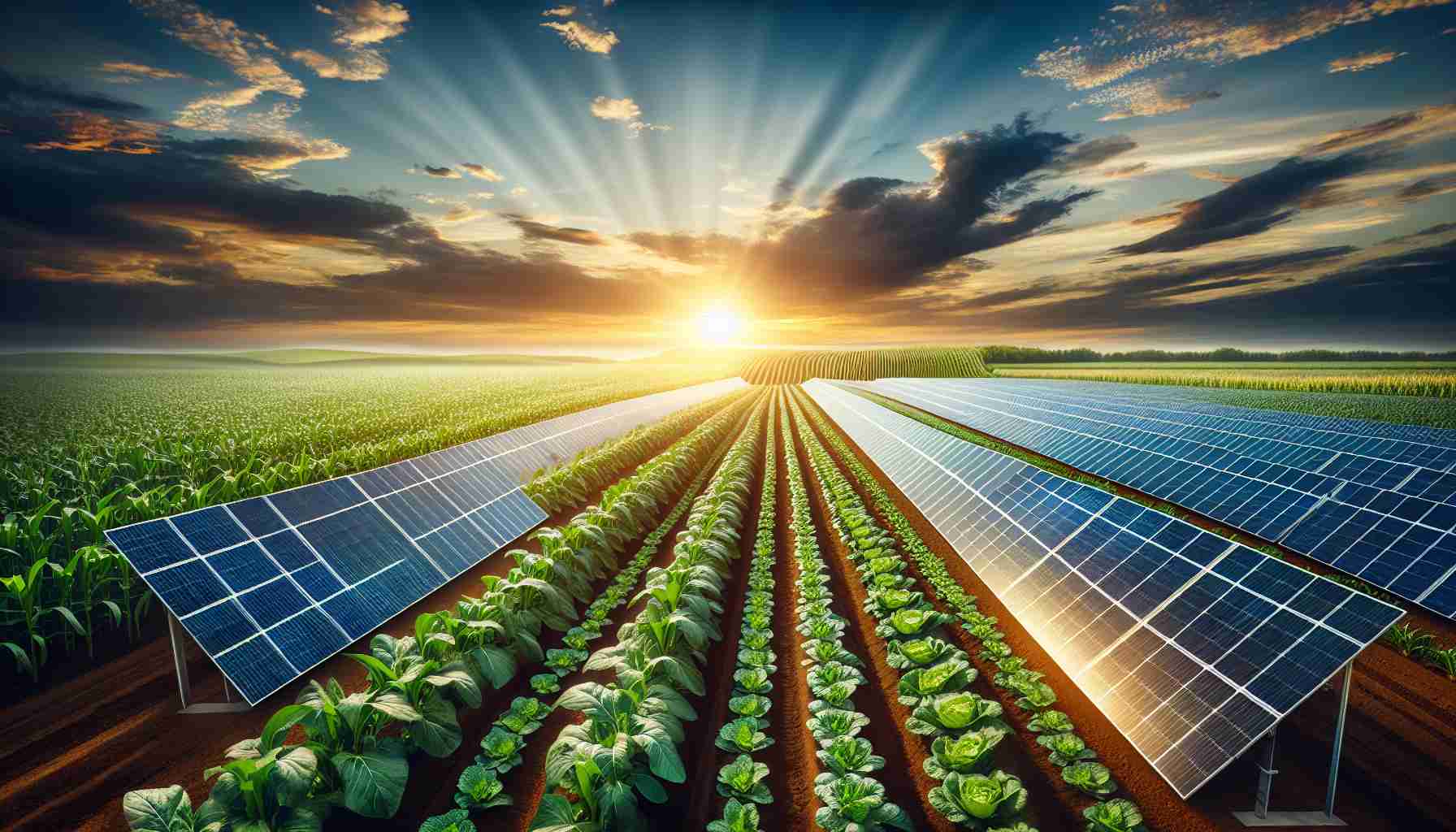
Agrivoltaics: The Future of Sustainable Farming
Agriculture and renewable energy are joining forces in an innovative approach known as agrivoltaics. A recent study from the University of Sheffield demonstrates that integrating solar panels with farming can dramatically enhance crop yields while efficiently managing water resources.
The research team, which included scientists from the University of Arizona and CIFOR-ICRAF, discovered that common crops like maize and beans flourish in the partial shade created by solar panels. The shade not only shields the plants from harsh sunlight but also minimizes water evaporation, leading to more sustainable irrigation practices.
Professor Sue Hartley from the University of Sheffield emphasized the potential of this technique to address critical global challenges. By cultivating crops under solar panels, farmers can create a favorable microclimate that fosters resilience against heatwaves and reduces irrigation needs.
Furthermore, the dual use of land for agriculture and solar energy generation aids rural communities by providing access to clean electricity for homes and businesses. This ensures a better quality of life while promoting energy independence.
The findings of this study reveal that agrivoltaics can revolutionize how we think about land use, offering a practical solution to the pressing issues of food security, water scarcity, and energy production. The future of farming may be brighter than ever, powered by the sun!
Revolutionizing Farming: Understanding Agrivoltaics and Its Benefits
Agrivoltaics: The Future of Sustainable Agriculture
Agrivoltaics, the combination of agriculture and solar energy production, represents a groundbreaking approach to sustainable farming that is gaining momentum globally. This innovative dual-use system not only optimizes land use but also addresses several critical environmental challenges, including food security and climate resilience.
Key Features of Agrivoltaics
1. Enhanced Crop Yields: Studies indicate that crops like maize and beans can benefit significantly from the partial shade provided by solar panels. This microclimate reduces the intensity of sunlight, allowing plants to thrive while minimizing stress.
2. Water Conservation: With the reduction in direct sunlight exposure, there is less evaporation of water from the soil. This leads to improved water retention, making irrigation more efficient—a crucial advancement in regions facing water scarcity.
3. Increased Energy Independence: By generating clean electricity on-site, farmers can reduce their dependency on external energy sources. This not only lowers energy costs but also supports local economies by providing electricity to rural communities.
4. Climate Resilience: Agrivoltaics creates a protective environment for crops, helping them withstand extreme weather events such as heatwaves. This resilience is essential in adjusting to the increasingly erratic climate patterns experienced globally.
Use Cases and Applications
Agrivoltaics can be applied in various agricultural settings, from small family farms to large commercial operations. Some potential applications include:
– Vegetable and Fruit Farms: Growing shade-tolerant crops such as spinach and strawberries can maximize productivity while generating energy.
– Livestock Operations: Combining solar panels with grazing land can ensure pasture health while providing renewable energy.
– Urban Agriculture: Rooftop gardens equipped with solar panels can support city farms, contributing to urban food security and energy needs.
Pros and Cons of Agrivoltaics
Pros:
– Sustainable land use that promotes biodiversity.
– Improved crop performance and reduced water needs.
– Provision of renewable energy in rural areas.
– Potential for economic benefits through energy savings.
Cons:
– Initial installation costs for solar panels can be significant.
– Requires careful planning to ensure that crops and solar panels coexist effectively.
– Potential shading effects on some crop types may limit the range of suitable species.
Insights and Trends
The agrivoltaics movement is expected to grow as more farmers understand its benefits. Innovations in solar technology and farming techniques will likely enhance the efficiency of these systems, making them increasingly attractive. Reports suggest that as energy prices continue to fluctuate, agrivoltaics may become a vital component of sustainable agricultural practices.
Sustainability and Security Aspects
By integrating solar energy production with agriculture, agrivoltaics contributes to sustainability goals by:
– Reducing greenhouse gas emissions associated with fossil fuels.
– Promoting carbon sequestration through healthier soils and vegetation.
– Enhancing food production to combat hunger while preserving natural ecosystems.
Market Analysis and Future Predictions
As climate change intensifies the need for sustainable practices, the market for agrivoltaic technologies is poised for significant growth. Investment in research and development will likely spark innovations that make these systems more accessible and effective. New collaborations among agriculturalists, scientists, and energy experts are essential for unlocking the full potential of agrivoltaics.
In conclusion, agrivoltaics stands at the intersection of agriculture and renewable energy, presenting a promising solution to some of the most pressing challenges of our time. With its ability to produce food and energy simultaneously, it offers a glimpse into a more sustainable and resilient future for farming.
For more information about sustainable farming practices, visit link name.



